South Korea is building the world’s first self-sustaining “floating city”
In South Korea’s largest port (and second-largest city), a prototype for the world’s first self-sustaining floating city is emerging. The first segment of the project should be ready by 2025.
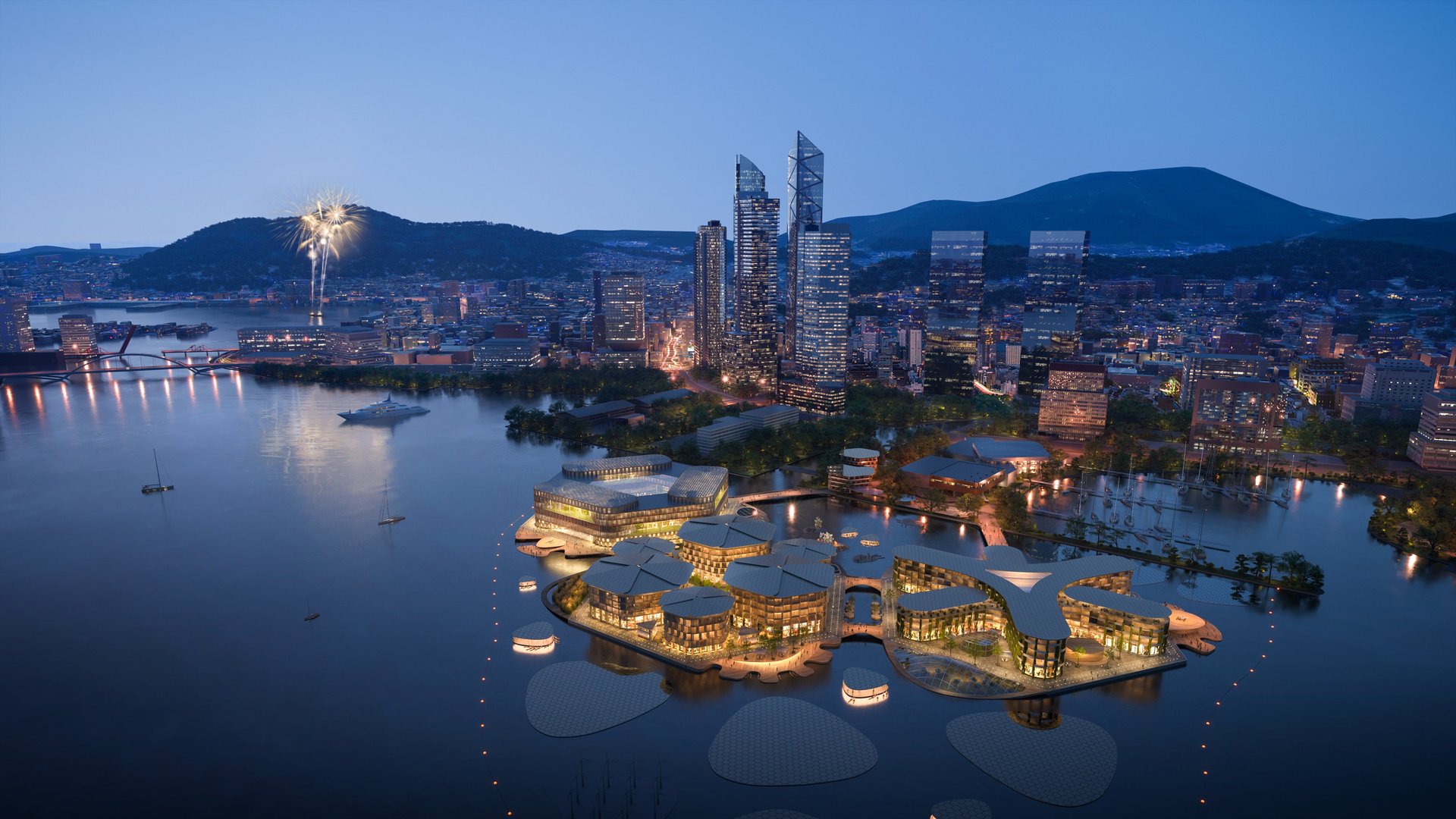

In South Korea’s largest port (and second-largest city), a prototype for the world’s first self-sustaining floating city is emerging. The first segment of the project should be ready by 2025.
The design concept for the so-called Oceanix Busan, which was announced at the UN headquarters yesterday, is compelling. Architectural renderings showcased a 15.5 acre area for 12,000 people built on a trio of buoyant platforms that can support the full range of urban infrastructure—from apartment buildings, markets, offices, parks, green energy grids, to hydroponic farms. The smart city that will generate 100% of its energy and water needs.
While there are several innovative flood-proof settlements around the world—HafenCity in Germany, “sponge cities” in China, and Appgrading Wet Slums in Bangladesh among them—Oceanix Busan is a first attempt to erect a fully sustainable city from scratch.
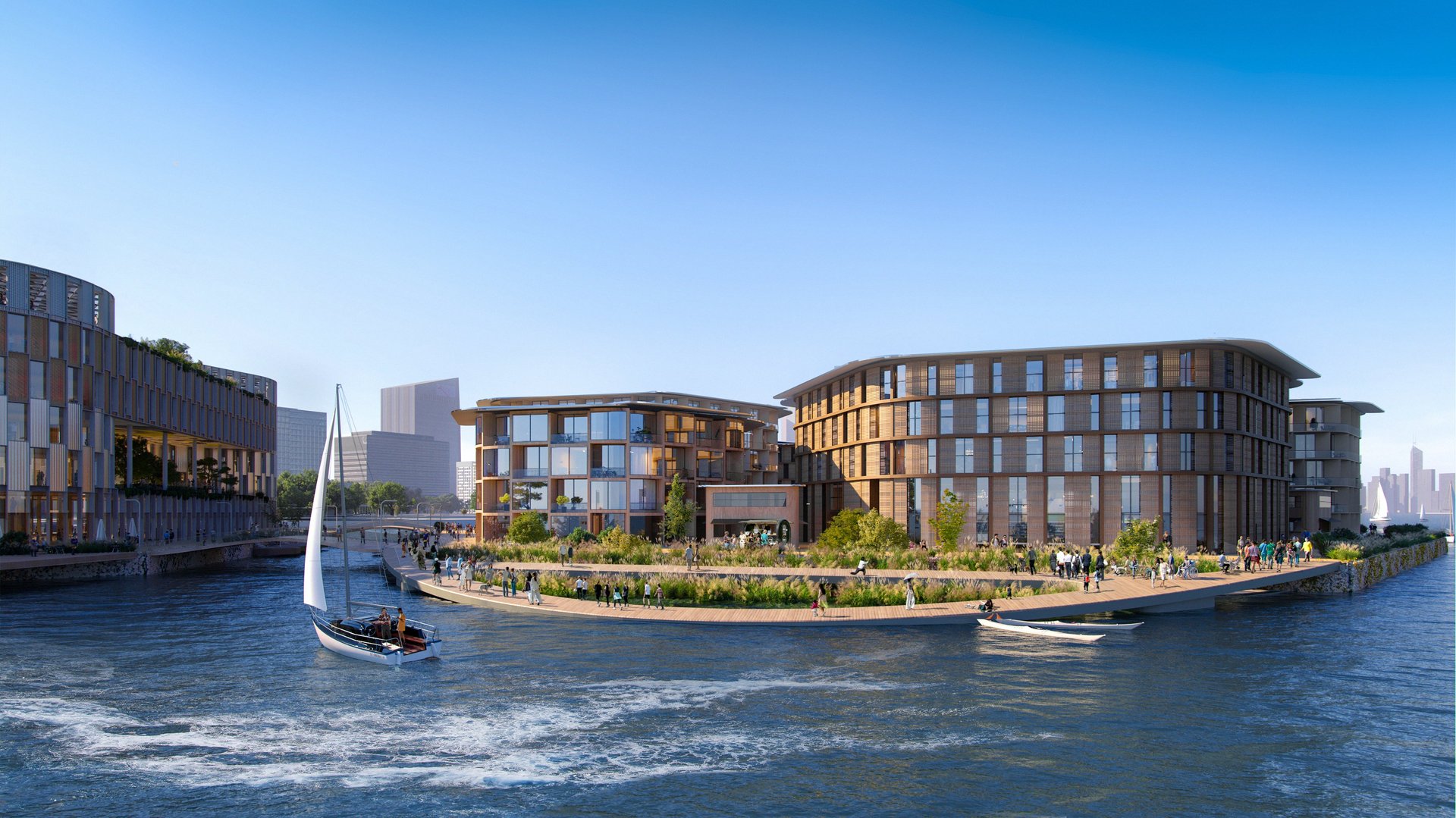
Spearheaded by the tech company Oceanix, the United Nations Human Settlements Programme (UN Habitat), and the city leadership in Busan, with BIG-Bjarke Ingels Group and the South Korean firm SAMOO as architects, the project will be wired with a suite of smart building technologies for a warming planet.
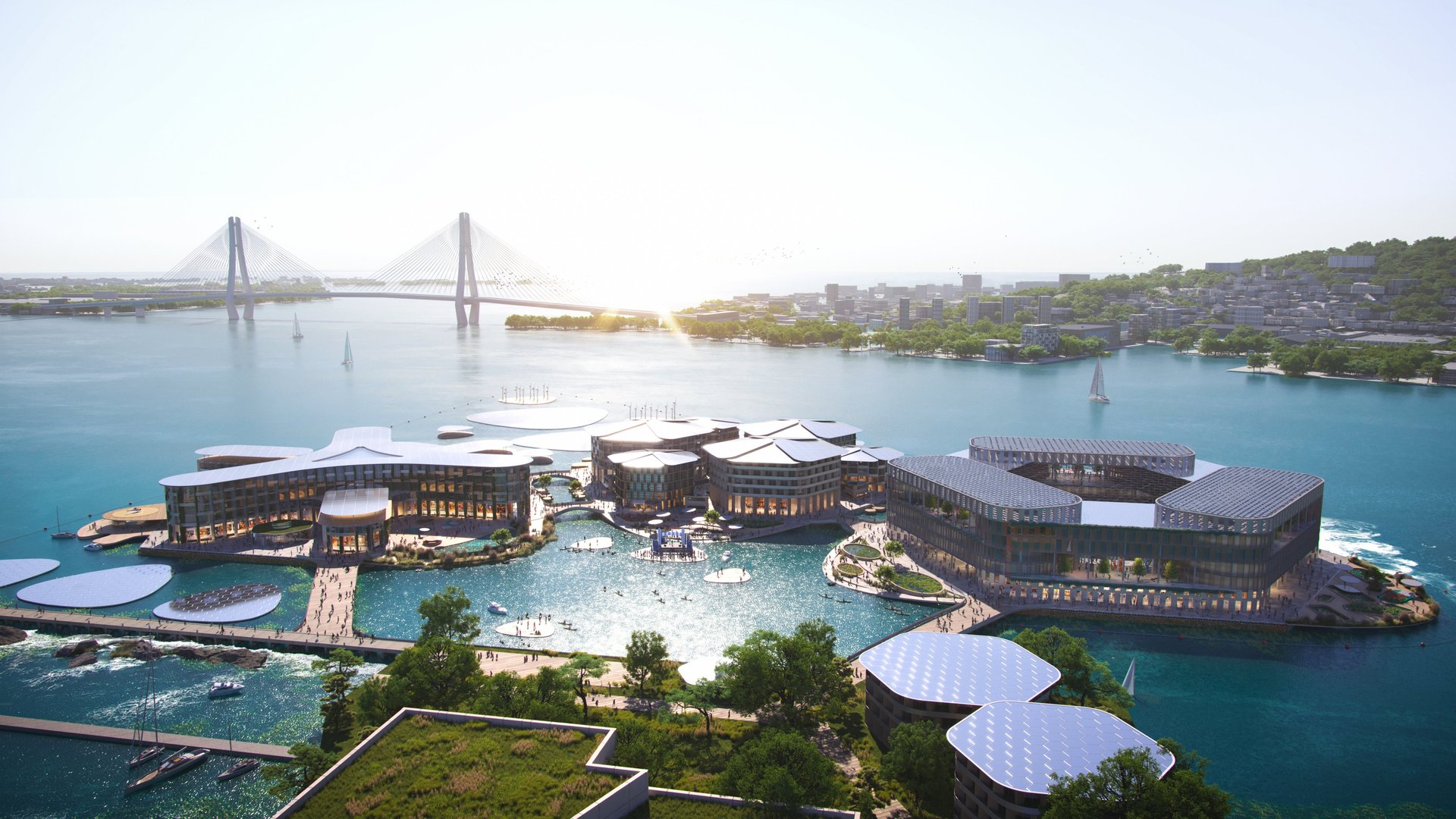
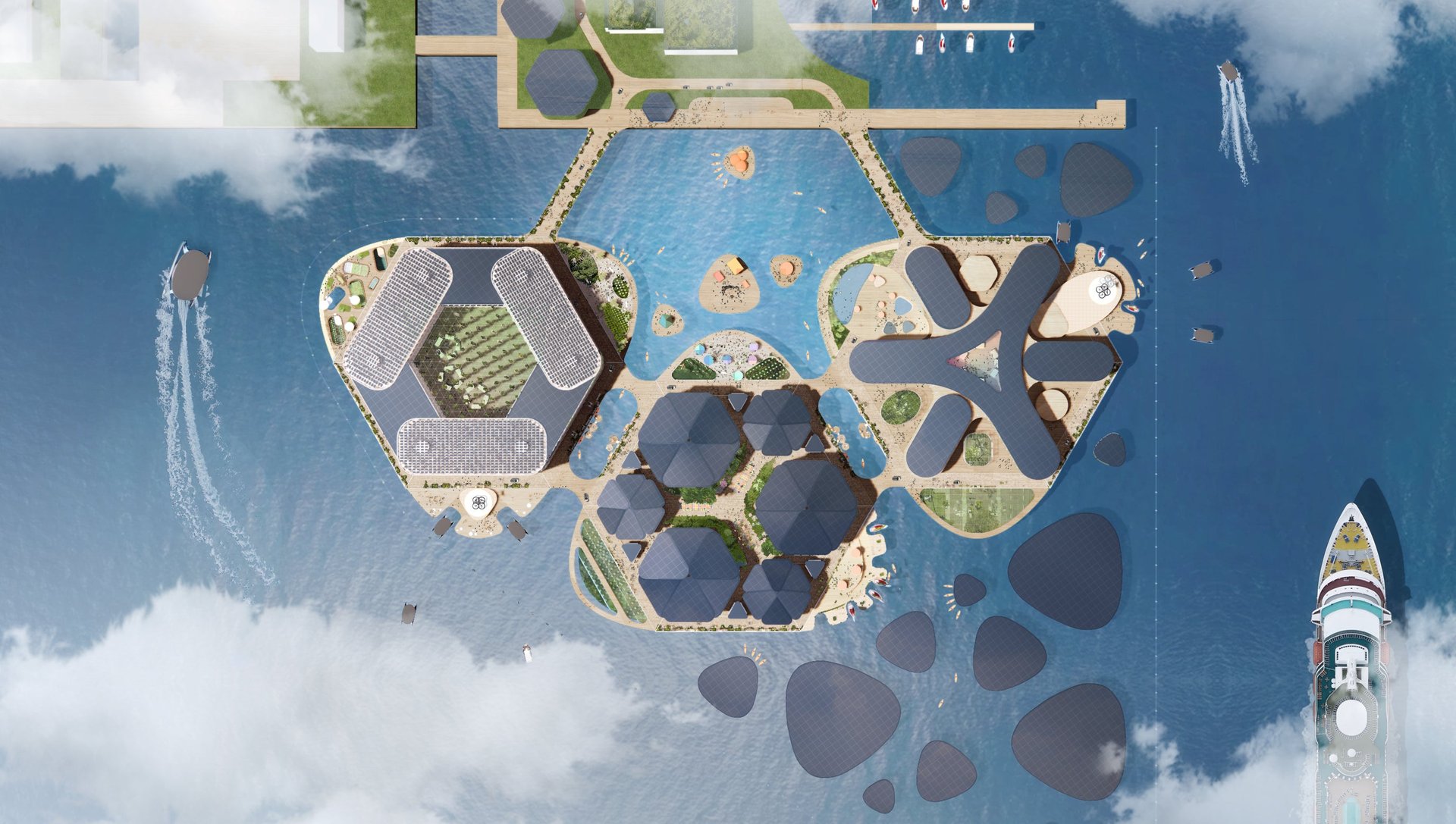
“Imagine a masterplan that is not made from paving roads or building foundations, but one that channels the flow of energy, water, food, and waste and create this kind of blueprint for a maritime metropolis,” explained the Danish architect Bjarke Ingels, founder of BIG, at the UN launch event.
A haven of sustainable living
The pilot project in Busan is a key milestone in realizing a grand vision of building floating havens of sustainable living capable of supporting 85,000 residents in various coastal cities around the world. In a 2019 TED talk, Ingels described the idea for a manmade ecosystem that would fulfill all 17 of the UN’s Sustainable Development Goals:
We have to design it so it can produce its own power, harvesting the thermal mass of the oceans, the force of the tides, of the currents, of the waves, the power of the wind, the heat and the energy of the sun. Also, we are going to collect all of the rain water that drops on this man-made archipelago and deal with it organically and mechanically and store it and clean it. We have to grow all of our food locally, it has to be fish- and plant-based, because you won’t have the space or the resources for a dairy diet. And finally, we are going to deal with all the waste locally, with compost, recycling, and turning the waste into energy.
Programs are designed to help residents become more conscientious about their ecological choices: Household trash will be weighed and residents billed accordingly, for example, and goods will be available for rent, from furniture to children’s clothes. The urban plan also has no roadways, so that biking and walking become the main forms of transportation.
“Maybe by going off land and out to the seas in terms of urbanism and architecture, we are necessarily teaching ourselves ways to be more sustainable, more resilient,” says Ingels.
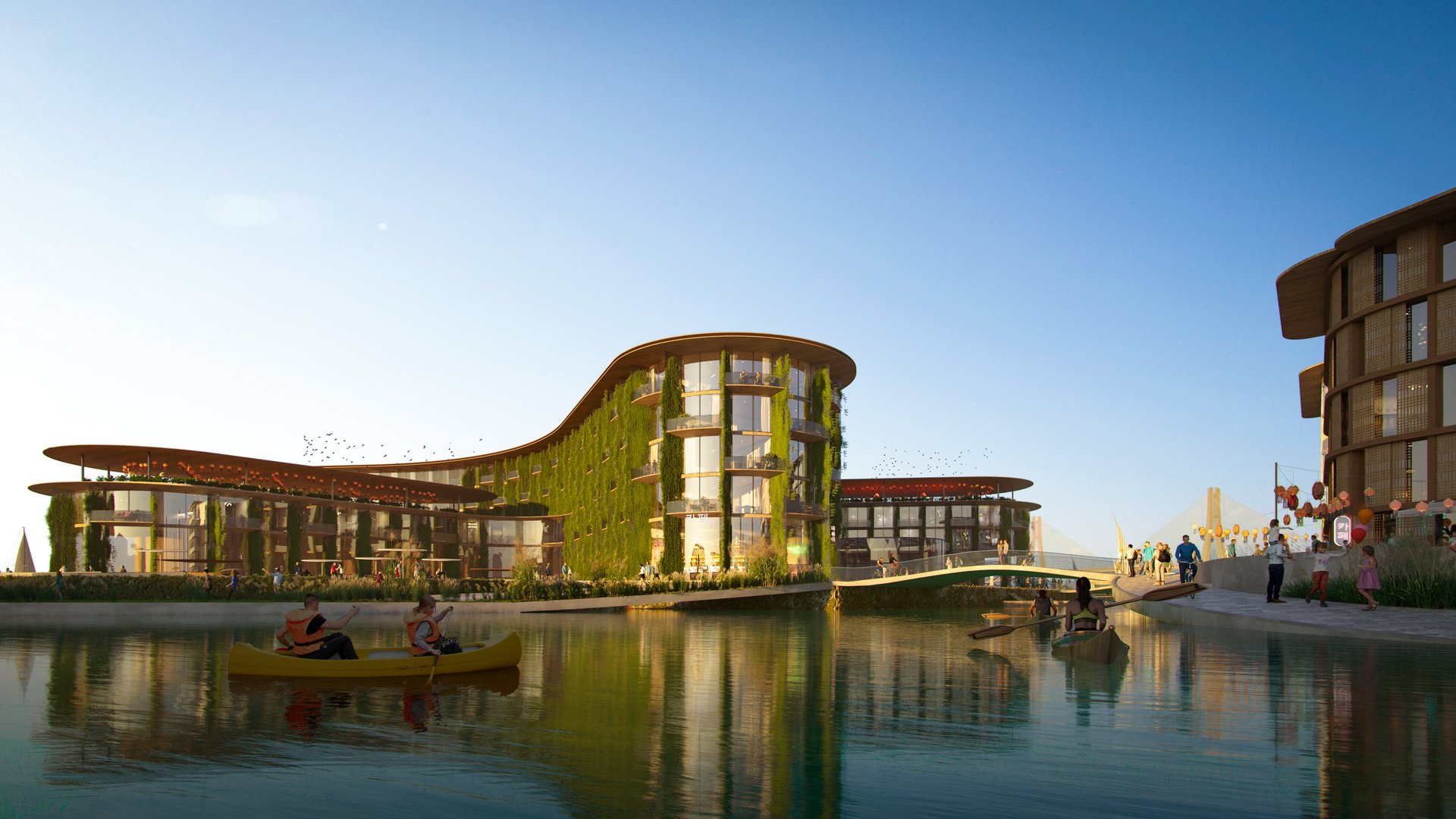
A blueprint for the rest of the world?
Oceanix’s CEO Philipp Hofmann says the prototype could be replicated in other coastal environments. “We have started with Busan but we want to help bring this highly-sustainable infrastructure solution to other coastal cities around the globe,” he said, flashing slides of the three-platform configuration in the Maldives, Miami Wellington, Lagos, Rio, and New York City. “It is applicable to any coastal environment, to any climate, and can be easily calibrated to their needs.”
But the copy-paste proposal is arguably more of a Photoshop fantasy, as several delegates noted during the three-hour briefing.
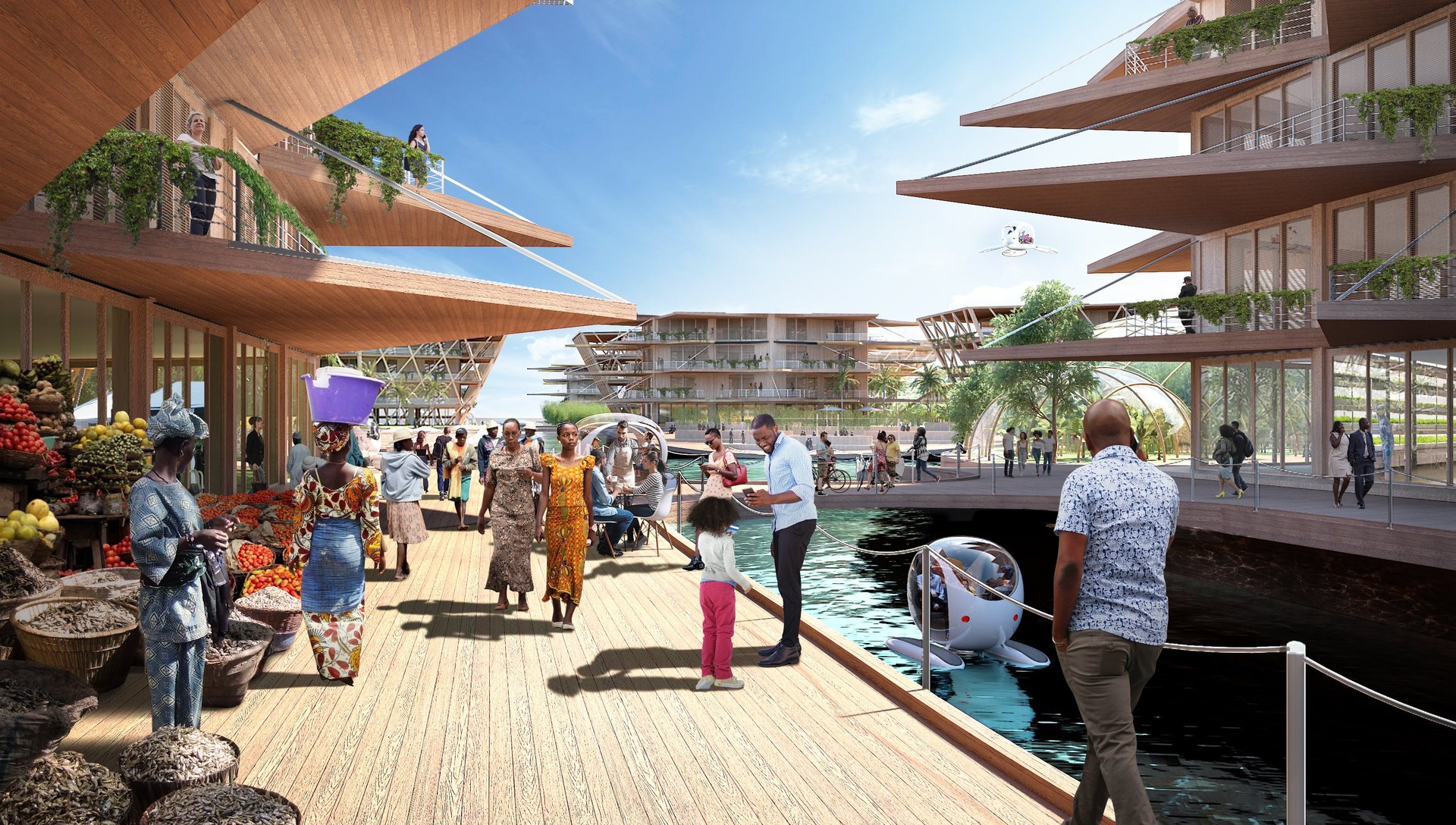
Maimunah Mohd Sharif, UN Habitat’s executive director, cautioned that such ambitious global solutions must consider the diversity in topography, local norms, and cultural expression. “It’s very important for us to think holistically in terms of not leaving anyone behind,” she said. “Will it improve the quality of life for all including the marine life?”
Architect Daniel Sundlin, a partner at BIG who’s been working on the project with Ingels since its inception, is well aware of the monumental task of creating a single design template for the world. “There’s no global [blueprint]. It’s all about going to places and meeting with people and finding out what’s important” he tells Quartz. “The core of the idea is the platform—a city on the water. Everything else on top should be informed with by whatever else is going on in that community.”